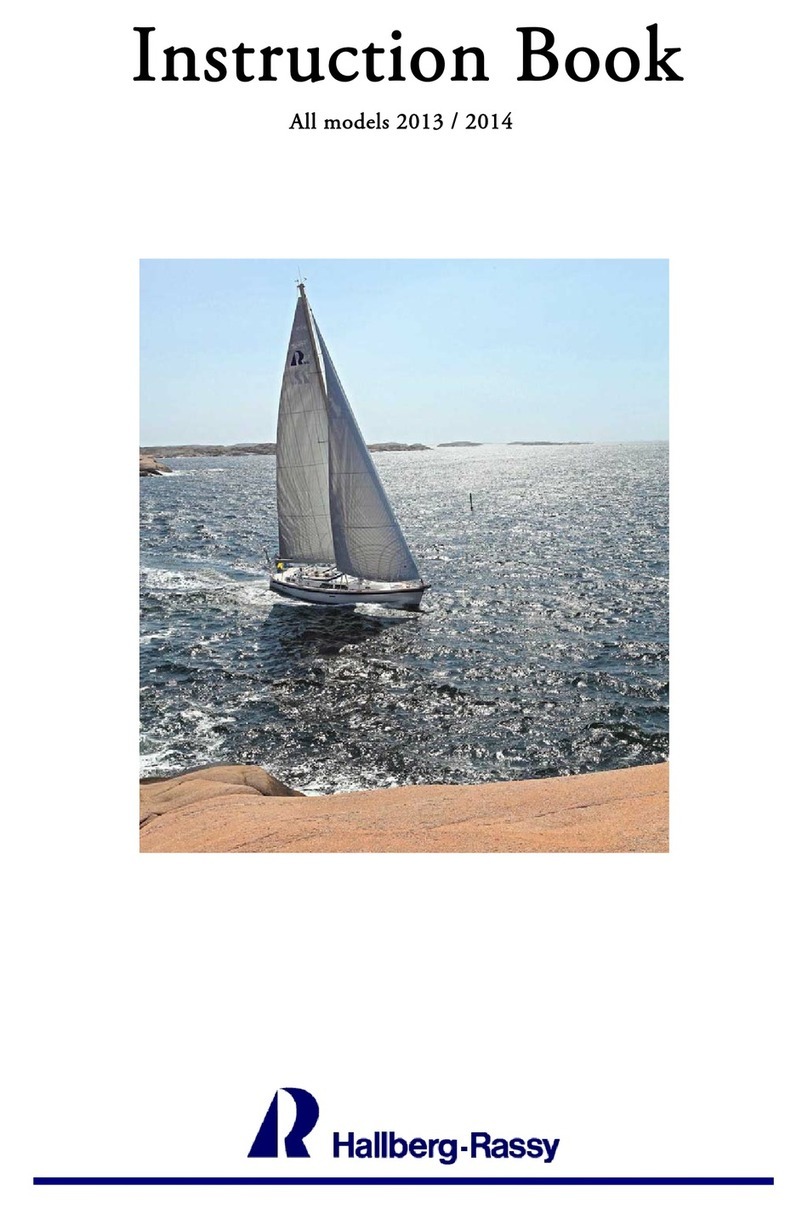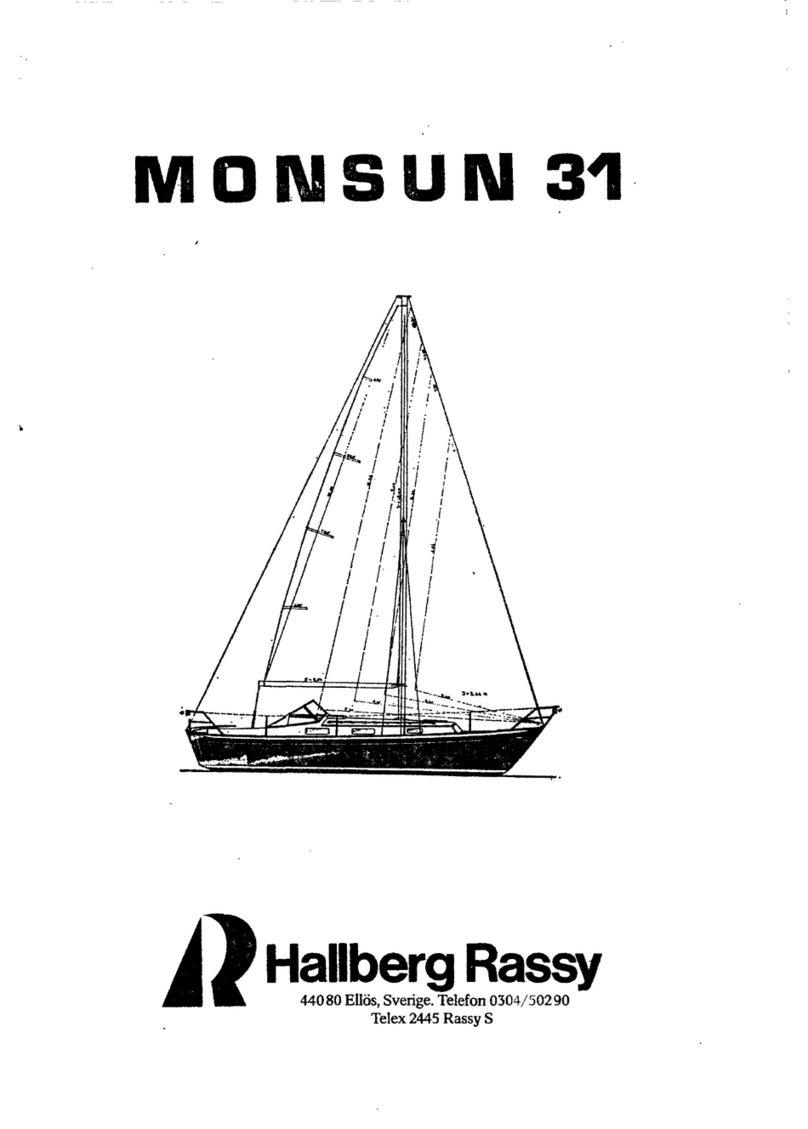
Mar 20
CHAPTER 1 - STORM SAIL RIGGING
1. The HR 34.2 yachts are equipped with a storm Jib, which hanks on to a ‘baby’
forestay (baby stay) rigged immediately aft of the furling genoa, and a deep reefed mainsail
– the third reef. The yacht will point higher with the storm jib than a heavily reefed genoa.
An indicative sail plan/reefing guide is in the laminated Reference Cards.
2. Storm Jib. The storm jib must remain accessible in the starboard cockpit locker.
The bag contains:
• One orange storm jib with wire Tack strop
• Two sheets bowlined to the clew
• Highfield Lever to connect and tension the baby stay
3. When not rigged, the Baby Stay is clipped onto the spreaders and tied to the
stanchion foot near the port shroud foot, with elastic cord. The following procedures are
used to prepare the storm jib for use; hoisting and dropping is as per any hanked jib:
1. Take the bagged storm jib forward
onto the foredeck and remove the bag
2. Ensure the bag is tied on and the
sail is secured
4. Unclip the baby stay from the
3. Secure the Highfield Lever midship port stanchion foot
Storm sail with sheets and Highfield Lever Baby stay secured to port midships stanchion foot

































